LOVE OF HAWAII
Three BYUH Native Hawaiians share their love and appreciation for their home, land, spirit and ancestry, p.24



Three BYUH Native Hawaiians share their love and appreciation for their home, land, spirit and ancestry, p.24



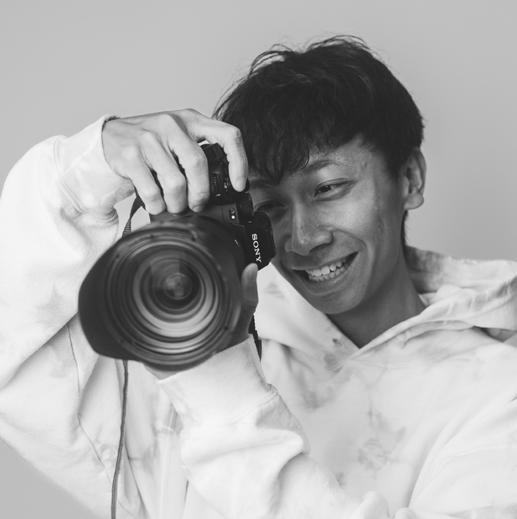



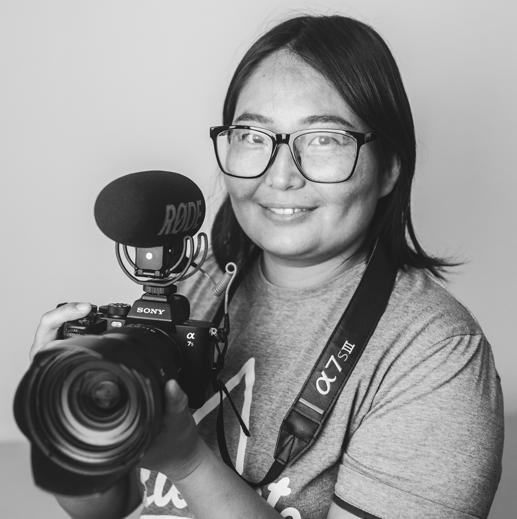





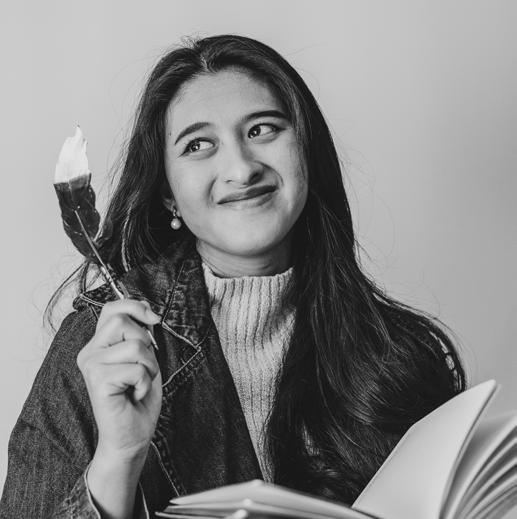

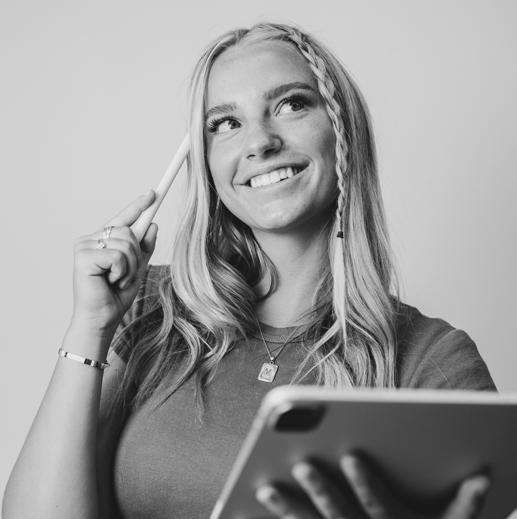










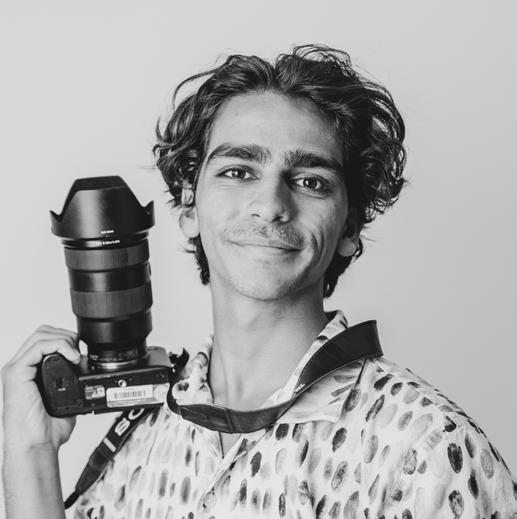
NEWS CENTER: Box 1920 BYUH Laie, HI 96762
Editorial, photo submissions & distribution inquires: kealakai@byuh.edu
To view additional articles go to kealakai.byuh.edu
CONTACT: Email: kealakai@byuh.edu

Phone: (808) 675-3694
Office: BYU–Hawaii Aloha Center 134
ON THE COVERS:
Front: Portrait of Tenille Nagareda-Ruben, Nadia Yoshizumi and Hope Iokia (left to right). Back: Close-up of a plumeria. Photos by Uurtsaikh Nyamdeleg.
ABOUT

The Ke Alaka‘i began publishing the same year the University, then called Church College of Hawaii, opened. It has continued printing for more than 65 years.

The name means “the leader” in Hawaiian.What began as a monthly newsletter, evolved into a weekly newspaper, then a weekly magazine and is now a monthly news magazine with a website and a social media presence.Today, a staff of more than 25 students work to provide information for BYU–Hawaii’s campus ohana and Laie’s community.
© 2023 Ke Alaka‘i BYU–Hawaii All Rights Reserved

There are so many different ways that we are able to express love that go far beyond a romantic sense. So many moments at home (p.28), with friends, self (p.22), and even strangers can be classified as love. As a photographer, it’s my job to capture these special moments between people, or even of a single person showing love through whatever their passion is.
I personally began photography through shooting waves from the water. As a surfer I always had a strong passion for the ocean and the beauty of our island. However, working here at Ke Alaka‘i, I’ve been shifting my focus from shooting the land we live on, to capturing people’s interactions, celebrations, service and activities on this land.
One story that shows this interaction between people and this island that stood out to me was the Eddie (p.20). No other event has so many people gathered together to show love for the sport of surfing, and the amount of joy and stoke felt by the athletes must have been a feeling like no other.
Thank you readers for being a part of our journey. Hopefully through our team’s photography and writing you are able to recognize these small moments of love that are all around you.


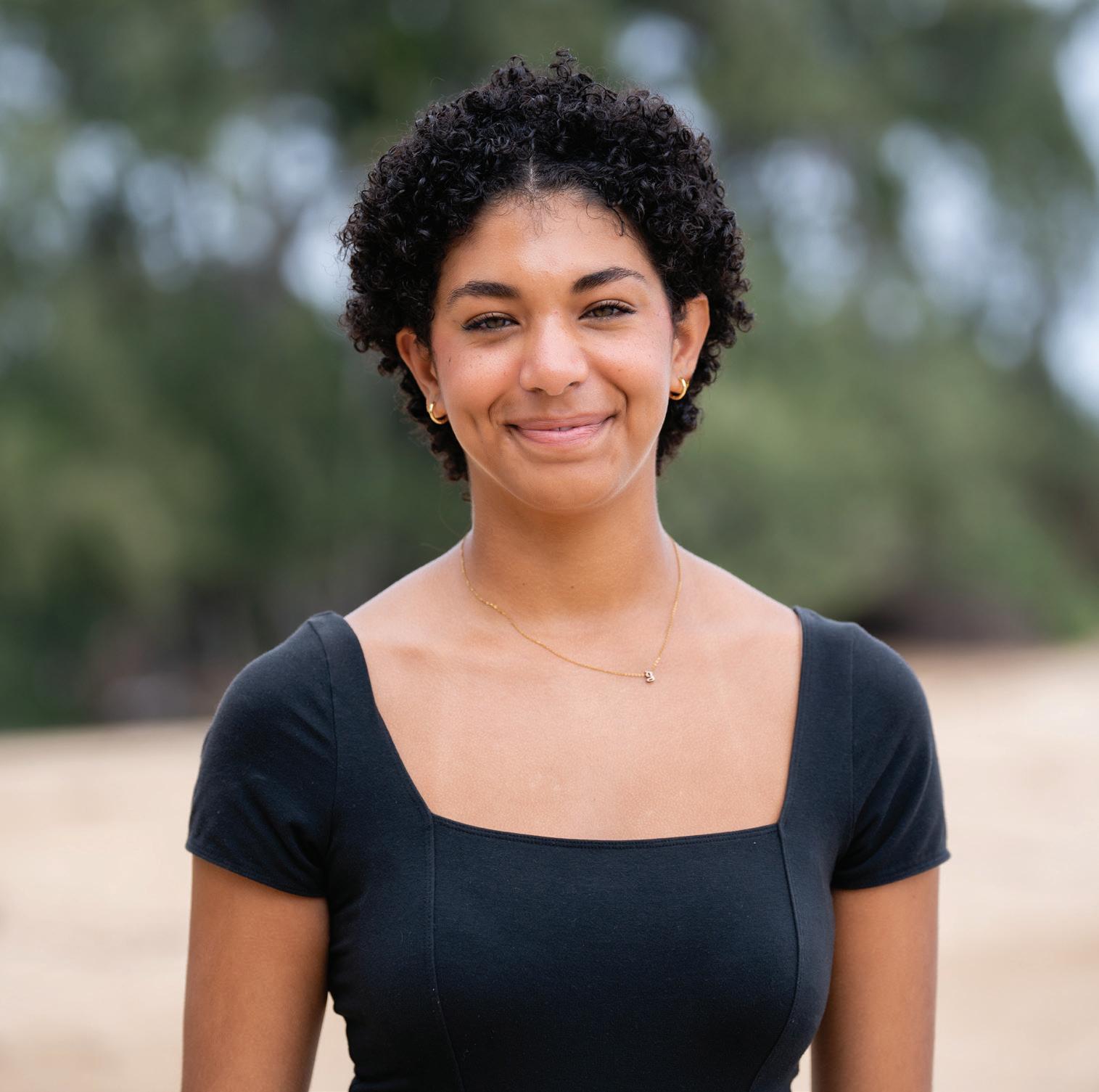


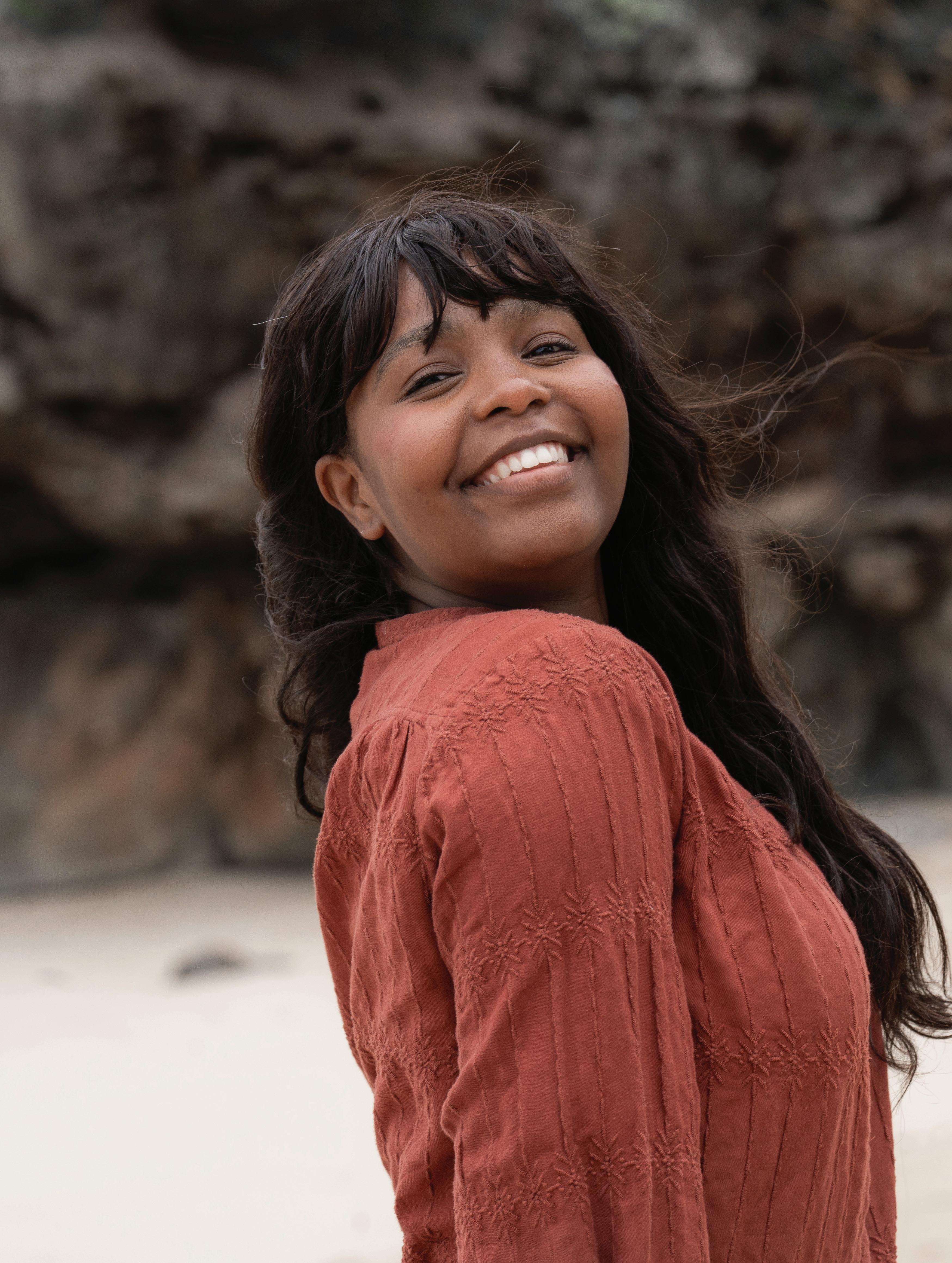
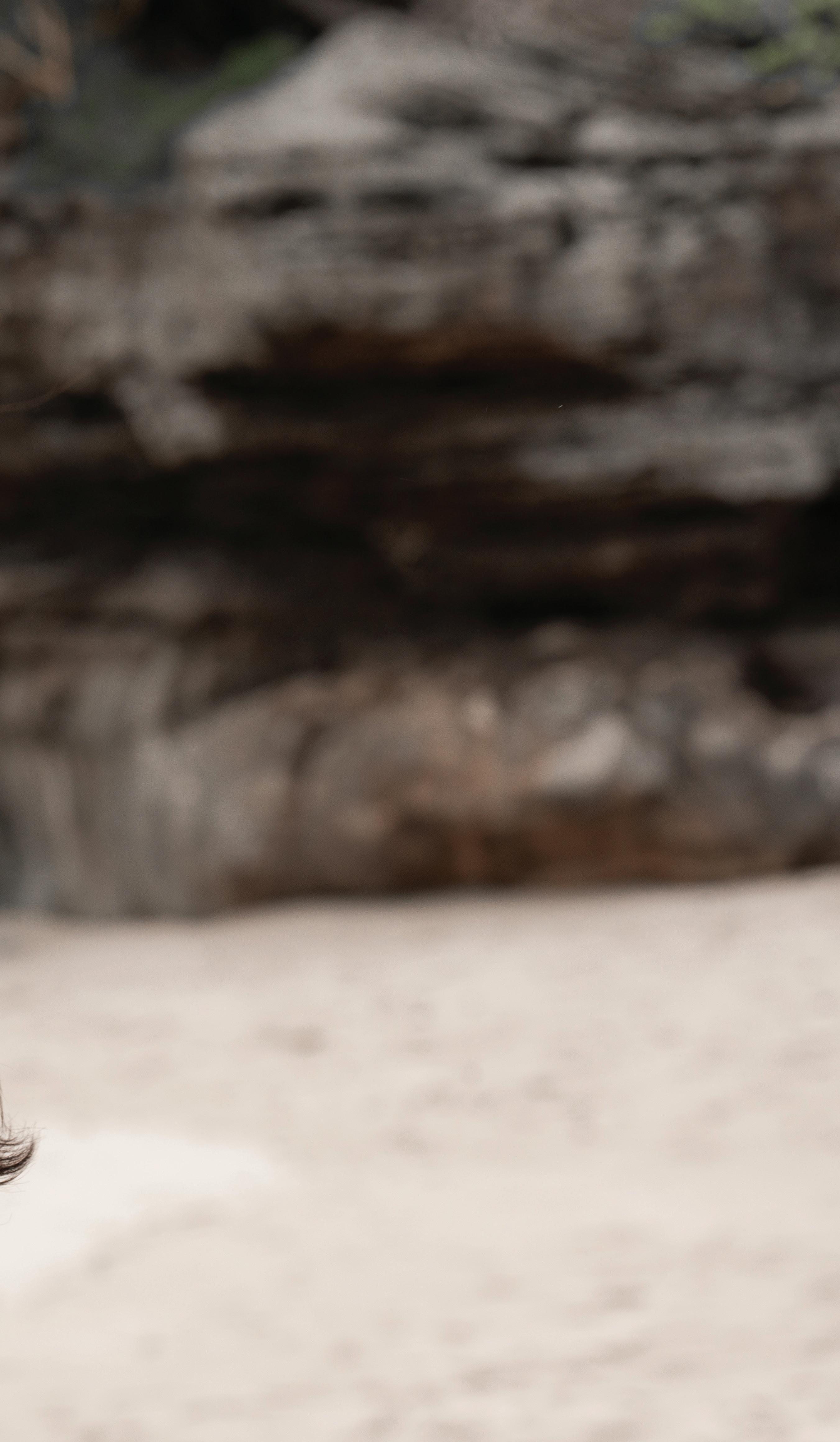 BY CHENOA FRANCIS
BY CHENOA FRANCIS
An annual tradition that has continued since the era of racial segregation in the United States and was officially recognized in 1976 by President Gerald R. Ford, Black History Month is the recognition of the crucial history of African Americans in the United State and the celebration of their achievements, reports National Public Radio journalist Scott Neuman.
“If a race has no history ... no worthwhile tradition, it becomes a negligible factor in the thought of the world, and it stands in danger of being exterminated,” said Carter G. Woodson, who Neuman says has been referred to as the “father of Black history” by scholars.
In an NPR article, Neuman further says Black History Month’s purpose is to honor the contributions African Americans have made as well as what they have sacrificed.
Freshman Azariah McFarlane said Black History Month focuses on “important parts of [our] history and how [we] got to where we are today.”
While her family didn’t have a party to celebrate Black History Month, McFarlane, a hospitality and tourism major from Florida, said, “I feel like the family and culture itself is a celebration, with all my family near, we are always together. … Black history shouldn’t be celebrated month by month. It should be celebrated year round.”
Sharing McFarlane’s sentiments, Gracie Payne, a sophomore from Virginia majoring in communications, said she also feels Black culture and history should be commemorated all year round. Payne said her mother loves to send her articles surrounding Black news, history and empowerment, which has helped her develop a stronger bond and love for herself.
Also commenting on BHM, Sarah Francis, a senior majoring in social work from Connecticut, said it is about designating a time and a space to talk about how America was not built just by the white man, but by immigrants, enslaved human beings and the indigenous communities. This month acknowledges all the effort [put] into making modern-day America.”


“I would like to see real stories from Black [narratives] who have actually been through these events,” said Payne, who explained she would like to see Black culture incorporated more into the media.
Francis commented, “A way to celebrate Black culture is to diversify your literature, your media and friend groups. Make everything in your life multifaceted, hear from different voices, listen to different stories.” She said doing good brings good, especially to the systematically oppressed.
McFarlane explained there is not much knowledge or teaching of Black history in school. “I think [Black history] should be more incorporated in academics at school.” She explained if more was taught, then there would
be more awareness and respect for Black culture and history. She noted how rich Black culture is and how it can be seen everywhere.
McFarlane encouraged anyone who wants to become informed about Black culture and history to take charge and use their resources. “We have the internet. If you don’t know, search it up [and] educate yourself,” said McFarlane.
Francis said she loves everything about being Black. She shared, “Being Black has made me a very communal person. … It has made me a lover of life and a lover of people. Me being Black and all the things I encompass makes me happier because there is more love in my life, because I know how it feels to be excluded for things I can’t control.”
Francis explained being Black has helped her see how beautiful color is, value differences and love special things. “[Being] Black is a very empowering thing. Being Black is amazing. There is just so much culture,” McFarlane said.

She conveyed her joy and pride in Black music and explained how music brings unity in communities. “The togetherness of Black people, there is a culture within us [that] brings us together because we’ve been through so much as a community. We are a community [who] understands each other and are there for each other,” she said.
Payne shared her journey of becoming comfortable in her own skin and her belief in the importance of taking pride and feeling joy in being of Black descent. She said she loves
Black fashion and the freeing expression she feels from it. “Being Black is a blessing. Becoming comfortable in your skin is resistance [in itself].”
The origins of BHM began with Woodson, who chose February as a time to encourage attention on and pride in Black contributions to civilization, Neuman says.
According to The National Association for the Advancement of Colored People, “[Woodson believed] Black people should be proud of their heritage and all Americans should understand the largely overlooked achievements of Black Americans.”
Neuman shares BHM has a theme every year. According to The Association for the
Study of African American Life and History (ASALH) website, each “theme reflects changes in how people of African descent in the United States have viewed themselves, the influence of social movements on racial ideologies and the aspirations of the Black community.”
The theme for February 2023 was “Black Resistance.” The ASALH website explains how African Americans have resisted the historic and ongoing oppression of destructive acts such as lynching, police brutality and racial pogroms, which are violent riots incited with the aim of massacring or expelling groups of people. The website describes how Black people have sought ways to “nurture and protect Black lives” through nonviolence, education, literature, sports and media.•
For the year of 2023, members of The Church of Jesus Christ of Latter-day Saints will be studying the New Testament in the Church’s “Come, Follow Me” curriculum. The New Testament, a collection of writings about Jesus Christ’s earthly ministry and atonement, is a reminder of the Savior’s love, according to BYU–Hawaii students and a religion professor.
 Photo by Alexandra Fuller.
Graphics by Sugarmaa Bataa (Kendra).
Photo by Alexandra Fuller.
Graphics by Sugarmaa Bataa (Kendra).
Dr. Matthew Bowen, an assistant professor in Faculty of Religious Education, holds a doctorate in Biblical Studies from Catholic University, and said the New Testament is a profound witness of the love Jesus Christ has for the children of God.


“I think one of the things that helps us love anything is when we understand the intent behind it. When it comes to the New Testament, we’re talking about a variety of documents and texts written by people who wanted, from their heart, to convey the witness they had of Jesus Christ as the long-awaited Messiah.”
Bowen said when he was young, he came across illustrated editions of the Bible in his grandparents’ house in Utah. When he read about Jesus’ death in the New Testament, Bowen said it had a powerful impact on him, as he thought about the love the Savior had for him and countless others to suffer and die the way He did.
Bowen said for him, the New Testament is full of promises of comfort and love from the Savior, including a reminder Bowen will be reunited with his son who died in infancy.
Besides the Savior’s atonement in Gethsemane and on Golgotha, which Bowen said was His crowning achievement, he said the New Testament was full of expressions of godly love. “A lot of them are the very personal encounters He has, like when He raises Jairus’ daughter from the dead,” he explained, relating the miracle told in Mark 5:35-43.
“As He’s on the way to perform that miracle,” Bowen continued, “there’s the story of the woman who reaches up and touches the hem of His robe (Mark 5:25-34). And then there’s the way He responds to her faith. It’s always very personal.”
Bowen said Jesus Christ was never happy with the hypocrisy He saw in groups like the Pharisees, and reserved some of His sternest words for them and other religious leaders
who had forgotten the importance of God’s love. “They had allowed rules and applications of divine law and divine principles to trump the need to minister to people personally and to recover them,” he said.
Stephen English, a sophomore from Florida majoring in communications, said the language of his mother’s home country, the Philippines, helped him to better appreciate the love of God as it appears in the New Testament.
“In Tagalog, the word for ‘love’ and the word for ‘expensive’ are pretty much the same thing. That denotes value.” English said saying “I love you” in his mother’s native language of Tagalog also means “I value you. God puts so much personal value within all His children.”
English cited John 3:16, where it says, “For God so loved the world, that he gave his only begotten Son, that whosoever believeth in him should not perish, but have everlasting life.”
Bowen highlighted the Gospel of Luke as one of his favorite books in the New Testament, particularly Chapter 15, where the Savior tells three parables concerning those who are lost.
These parables are those of the lost sheep who wandered from the 99 others, the lost coin that was diligently sought for and the parable of the prodigal son. According to the text, the Savior directed the parable towards the Pharisees and scribes who criticized Him for spending time with tax collectors and sinners.
“He makes a tremendous point of the idea that it’s a religious leader’s responsibility to recover those who are lost [and] to extend God’s love to them,” shared Bowen.
Bowen also said he loved Luke’s account of the Savior in the Garden of Gethsemane. “It talks about him being in agony.” He said the root word for agony, “again,” denotes being in a struggle, which is what the Savior faced as He atoned for the sins of the world. “And then His sweat produces extrusions of blood,” he continued, quoting Luke 22:44, as he said, “and his sweat was as it were great drops of blood falling down to the ground.”
Anatevka Ah Loy, a senior from Hawaii majoring in English, also said her favorite story in the New Testament was the Savior’s experience in Gethsemane. “Reading about how much pain He went through really made me even more grateful towards Him. That’s the reason He came down here. It really opened my eyes to the full scale of the atonement and how big of an act of service it was. The ultimate act of service.”
According to English, “The shortest scripture in all of the Bible is ‘Jesus wept’ (John 11:35).” In this scripture, Jesus Christ had been making his way to Bethany to visit his friend Lazarus who was ill, but was told by his sisters Martha and Mary that Lazarus had died and was buried in his tomb.
When He learned this, the Book of John recorded Jesus went to mourn with the two sisters and wept with them, even though He knew He could raise Lazarus from the dead.
For English, this action of mourning with Mary and Martha showed Jesus’ empathy and was a reminder to all disciples to mourn with those who mourn.
“Jesus is Jehovah clothed in the flesh, He was one of us in a very particular way. He lived out the whole breadth of the human experience…He had a love enough for Lazarus
to cry for him. He manages to turn His desire for Lazarus to come back into a way to glorify His Father,” English explained, referring to the Savior bringing Lazarus back from the dead after thanking His father for having heard Him.
English also said the account of Jesus raising Lazarus from the dead was a beautiful example of taking one’s own desires and using them for righteous purposes.
Another expression of love seen in the New Testament English noted was the love Jesus had for His mother Mary. When Jesus was crucified at Calvary, Mary and John the apostle were present.
While he hung on the cross, slowly dying, the Savior commanded John to care for His mother from that moment onward (John 19:25-27).
“That kind of suffering he had to endure, to turn outward like that and continue in that enduring love is ... there aren’t many people that I can imagine who could do that.”
The cross and Christ
Bowen said he felt some Latter-day Saints have become uncomfortable with seeing crosses, whether they are on walls or on jewelry, but said the cross was an important part of understanding exactly what the Savior went through for everyone who would ever live.
He related the story of a man named Horatio Spafford, who penned the words to the hymn, “It Is Well with My Soul.”
According to Bowen, Spafford suffered unimaginable loss. After losing his son, as well as a great deal of property, he received word that the ship his wife and four daughters were traveling on had sunk while crossing
the Atlantic Ocean. All four of his daughters perished, leaving his wife as his only surviving family member. Because of the Savior, Bowen said, Spafford’s faith did not diminish, but actually grew, and led him to write the hymn, one verse that highlights the symbolism of the cross in Christianity.
“My sin, oh, the bliss of this glorious thought!
My sin, not in part but the whole, Is nailed to the cross, and I bear it no more,
Praise the Lord, praise the Lord, O my soul!”
Bowen continued, “Paul talks about Christ becoming ‘sin’ for us. He did that so we could become like Him, like the Father.”
When Ah Loy said she took a New Testament class at BYUH from Dr. Daniel Sharp, she said her appreciation for the volume of sacred scripture increased. The class looked at the Savior through the eyes of the different prophets and apostles who knew Him.
She said through the New Testament, she gained a greater understanding and appreciation for Jesus Christ, especially through the miracles and acts of service He performed and the promises He gives to everyone.
“It tells us Christ loves us. He did all of these things for us - all because He loves us. He promises us if we just follow His word and listen to His commandments, we can be happy. He has so many blessings He wants to share with us.”
Bowen emphasized the power covenants had for followers of Christ, and how the New
Testament is all about making and keeping covenants. He also said it is important to remember the New Testament is not a replacement for the Old Testament.


He explained all the standard works are important and need to be studied and appreciated, since they all point to Christ.
“President Nelson has put a tremendous emphasis throughout his life on the promise of the Abrahamic covenant. Well, Paul does the same thing,” he added, referring to the apostle Paul and his epistles to church members in cities such as Corinth, Galatia, Ephesus, Colossus and Thessalonica, which make up a large portion of the New Testament. These writings are words of love and instruction to the saints in those cities, advising them to focus on Jesus Christ and avoid sin, said Bowen.
Through the teachings of Paul and other apostles such as Peter and John, the gospel was spread around the Mediterranean. Bowen made a point that the New Testament as a whole points to covenants just as the Old Testament does. He said Christians need to know the New Testament is not a replacement for the Old. Making and keeping covenants through ordinances is still necessary, he emphasized.
“In order to understand Paul, you have to understand the Abrahamic covenant within the context of the Judaism of his time, and then understand what he’s saying about Jesus’ role in bringing to pass all of the promises in the Abrahamic covenant,” Bowen explained.
The Abrahamic covenant is the covenant God made with the prophet Abraham, as told in the Old Testament and Pearl of Great Price, according to the website ChurchofJesusChrist. org. In exchange for following the principles and ordinances of the gospel, keepers of the covenant receive blessings from God and will be able to enter into the Celestial Kingdom, living in everlasting happiness with Him and their Savior, Jesus Christ, says the site. •
Photo by Yui Leung.

 Ronal, who is the spiritual leader of the Sea Clan, sports facial markings evoking Maori tattoos.
Photo provided by Disney. Graphics by Yichi Lu.
Ronal, who is the spiritual leader of the Sea Clan, sports facial markings evoking Maori tattoos.
Photo provided by Disney. Graphics by Yichi Lu.

Having recently become the focus of accusations of romanticizing colonization and homogenizing indigenous people, Smithsonian Magazine says James Cameron’s new movie “Avatar: The Way of Water” has engaged activists and online commentators.

Laie Resident and Cook Island Native William Numanga said while he personally had no problem with the film, he encouraged everyone to form their own opinion. “This is not a dig at those who are cultural specialists. My opinion is: enjoy the movie. This is not the first time indigenous culture is recognized in cinema. It will highlight the beauty and some of the challenges and struggles that we’ve had.”
“‘Avatar’ is on a big stage. Remember, the movie is a product of the entertainment industry. Of course it has the ability to educate, but that’s not its draw. It has no responsibility to educate people. If you’re intrigued about the face markings on the people in the movie, great! People may want to find out more, and I’m hoping this movie makes them want to ask more questions and seek to understand more about the cultural elements.”
Elijah Lemusuifeauaali’i, an alumnus from Australia who graduated in 2022 with a degree in Pacific Island Studies, said there needed to be nuance when looking at an issue like cultural appropriation. Lemusuifeauaali’i, whose father is Samoan and whose mother is Māori from New Zealand, said it’s important for curious parties, who want to learn more about the cultures behind the fictional characters, to know who to go to for accurate information.

“There are a lot of places in the world today where you can go to learn about culture. But who you’re learning it from is more significant. Whilst there are a lot of places to learn, not all of those people in those places have necessarily gone through the appropriate steps and had the right experiences to qualify themselves to teach culture.”
He used himself as an example, since he will be teaching Fijian next year as an adjunct faculty member. Lemusuifeauaali’i is not Fijian himself, but said he had to go through the experiences of serving a mission and studying for nearly 10 years to get to a point where he’s
qualified to teach about something he did not grow up around.
He also shared about how important it was for future stories about indigenous cultures to be told by indigenous peoples themselves.
“But I understand, as an indigenous person, we do not always have the luxury, tools, or means to do that. So for people like James Cameron, who I lovingly call ‘Western vessels,’ the mantle is very high and heavy for them to produce films that are at least something that highlights and compliments them. No one likes to be degraded, whether you’re part of an indigenous culture or not.”
In the Smithsonian article, Dr. Autumn Asher BlackDeer, a scholar of decolonization at the Graduate School of Social Work at the University of Denver, was quoted, saying the Avatar movies “cast all native peoples as being one and the same.
“I’m so tired of hearing Indigenous stories from a white perspective,” said BlackDeer. “We



don’t need Hollywood big-budget movies. We could tell our own stories.”
Speaking to CNN, Crystal Echo–Hawk, the president and CEO of IllumaNative, an organization dedicated to challenging the common narrative about native peoples, said Cameron is telling the story of colonization through a white male lens.
“It’s a level of arrogance once again that a White filmmaker can just somehow tell a story that’s based on Indigenous peoples better than Indigenous peoples ever could,” she added.
“It’s based on what James Cameron’s notion is of what he thinks Indigenous history is, what he thinks Indigenous culture is,” she said. “Everyone thinks that we’re a monolith. What it does is flatten who Indigenous peoples are, what Indigenous cultures, language, practices are.”
Anna Christiansen, an associate professor in the Faculty of Arts & Letters, said she agrees with the opinion that Indigenous people are more than a loose inspiration. “Representation is nice, but we should be able to see the complexity of our realities up on the screen, the same as any other.
That will happen slowly, I think, but in the meantime, we should not settle for representation that is cursory at best and misinterpretation at its worst.”
Use of cultural elements

Lemusuifeauaali’i said whilst the film highlighted Polynesian elements there are a number of indigenous cultures highlighted within the film.
Alex Song, a senior student from California majoring in psychology, said he had paid attention to the online discussions about the film and its uses of cultural elements. He said he personally felt the movie was showing the story of colonization through fiction, and how it affects indigenous people.
Song, who is of Native Hawaiian descent, said he is part of various Hawaiian activist groups. “On my own, I do a lot of research on colonization and how it affects the Native Hawaiian culture.
“And I think a lot of what happened in the movie, where people are taking the natural resources of another group of people and taking land sacred to indigenous people, that happened in our own history.”
Song said he thought it was very cool to see the Polynesian influence on the sea clan, which included their hairstyles and how they saw the whale-like tulkun as spirit sisters and brothers.

He cited a scene where the colonizing humans go out to hunt and kill a majestic-looking creature called a tulkun, which resembles a whale. “That’s something that really affected me and especially my wife. Because she is Māori, seeing them kill a whale like that was very hurtful to her to the point where she wanted to leave the movie [theater],” Song elaborated.
Lemusuifeauaali’i explained in many indigenous cultures, including Polynesia, people believed in sharing familial relations with living creatures such as plants and animals. He said this is why he thought it was especially powerful that this connection was shown in the movie.
Hauula Resident and BYUH alumna Kara Mataia said whilst the film highlighted Polynesian elements there are a number of indigenous cultures highlighted within the film. “I felt the only part that was distinctly Māori was the Pukana [whale] they did…
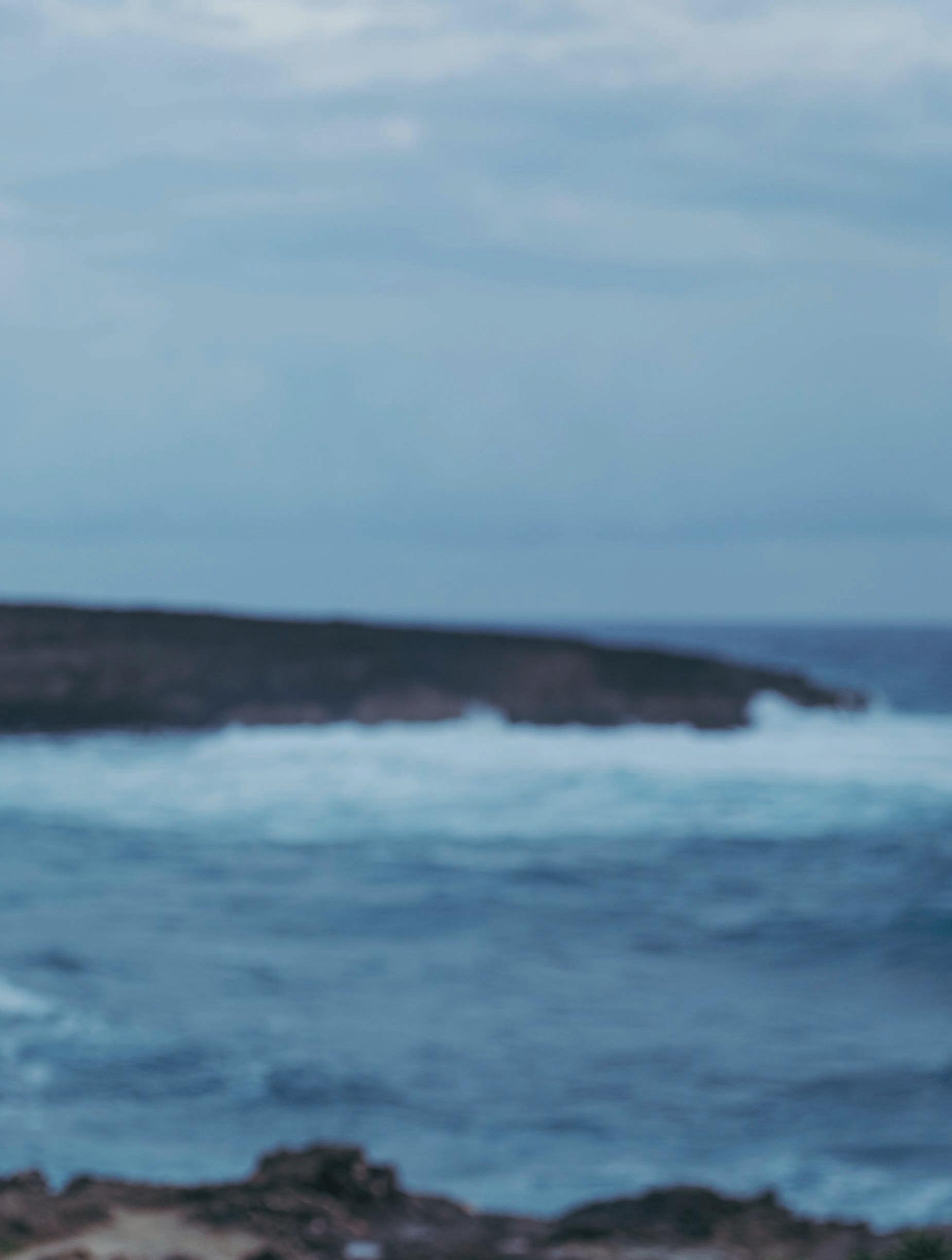
“There are a lot of places in the world today where you can go to learn about culture. But who you’re learning it from is more significant.”Elijah Lemusuifeauaali’i, who addressed different stances of cultural appropriation, stands at Laie Point. Photo by Joseph Ariono. Elijah Lemusuifeauaali’i
but other than that I felt it was representing all of Polynesia, especially Tahiti. I didn’t find it offensive but appreciated the tribute. I loved seeing the Avatar version of the islanders the way they represented Native Americans in the first one,” she explained.
Deepak Maran Reddy, a freshman from Fiji majoring in business management and finance, said while he knew of the controversy about the use of elements inspired from indigenous cultures, he said it was enjoyable to see things related to his culture.
“When they’re on Pandora in the movie, we see them hunting and fishing. I mean, that’s the island life…At the moment, Fiji is very modernized, but if you go back through history, people would deeply rely on the sea for their food,” Reddy stated.

Numanga used the example of how Cliff Curtis, who plays Tonowari, chief of the sea clan in the movie, is a man of Māori descent. He is a well-known actor in New Zealand, having starred in films like “Whale Rider” and “Once Were Warriors.”
According to IMDB, his tribal affiliations are with the Ngati Hauiti and Te Arawa tribes. His character sports facial markings evoking traditional Māori tattoos, according to Screen Rant.
Numanga said he was sure Cliff Curtis would have given perspective to the use of Māori imagery in the movie. “As long as Māori culture is represented in some way, I’m happy with that.”
Speaking about the usage of Polynesian, specifically Māori, imagery used in the film, Lemusuifeauaali’i stated, “Honestly, I feel very proud. It’s almost like a compliment to me that James Cameron would find such inspiration for his film from my people. As a Pacific Islander and a Māori myself, I do not find it disrespectful.
“He [James Cameron] does use facial tattoos for the aliens, but they are not exact
tattoos of our culture. He’s an artist. Like any artist, you find inspiration in something else and you put your twist on it. You recreate it to fit what you like. And I feel that’s what he’s done here. He hasn’t really tainted the culture.”
Numanga said his favorite characters were Jake and his wife, Neytiri. “They’re both very strong. I live in Hawaii now, away from the Cook Islands. Jake, in the first movie was a fish out of water and had to adapt to a new culture. I can identify with that,” he said.

Mataia said her favorite character was Neytiri, who she described as “the epitome of what a woman, wife, mother should be, to me at least. Strong, brave and able to fight for her family and alongside her husband.
“I love how even though she’s strong and takes care of herself, she supports her husband and is willing to give up everything to keep her family safe and together,” she continued.
“Now he and his wife need to move to a new place and learn to adapt together. I loved how the whole movie was about Jake embracing a new culture and making it a part of who he is,” Mataia added.
Reddy said he connected with Jake’s journey from being a warrior to a family man. “This time, the movie was all about how Jake is protecting his family. We can connect that to our gospel as well. It’s all about family,” he said.
Reddy also said he strongly identified with Jake, especially through looking back at his mission in Kiribati and Fiji.
“In part one, you have Jake and he’s human, coming from Earth, and gets to interact with the culture through the avatar. On a mission, you’re far from home, in a new culture, and start connecting with the people around you. Feeling what they are feeling.”
The first film takes place in the distant future, where Jake Sully, a paralyzed ex-marine, arrives on the faraway moon of Pandora. The powerful corporation Jake is working for is in conflict with Pandora’s indigenous population of blue, 9-foot tall humanoids called the Na’vi. Jake has his mind transferred into an artificially grown body that looks like one of the natives, known as an avatar, and sent to gain their trust, to negotiate with them to give up their home so the corporation can mine it for valuable resources.
Able to walk again in his new body, he falls in love with Neytiri, one of the women of the forest clan, and learns to truly live in harmony with nature. Eventually, he stands with the Na’vi against the humans and fully embraces his new tribe and identity.
The first of four planned sequels, “Avatar: The Way of Water” takes place 16 years after the original film. Jake has been living a happy life and has started a family, but all this is threatened when the humans return with the goal of permanently colonizing Pandora, no matter the cost to its unique ecosystem.
The return of the militant humans forces Jake and his family to flee the forest and migrate to the sea clans for sanctuary. He, his wife Neytiri, and their four children need to adapt to a whole new way of life in order to survive, as the threat against their survival and the biodiversity of Pandora grows stronger.
The storyline of the film series, according to Canadian filmmaker James Cameron, takes much of its inspiration from the colonization of the Americas and other lands by Western settlers, only this time in a science fiction setting. •
Right: Tonowari, who is the spiritual leader of the Sea Clan and husband to Ronal, sports facial markings evoking Maori tattoos. Photo provided by Disney.

The Eddie Aikau Big Wave Invitational is considered the most prestigious surfing contest, said Jake Maki, an 18-year-old Kahuku High School graduate who was invited to surf in the competition this year. The illustrious nature of this competition is partly why Maki said he was so shocked he was invited.
Last year, Maki said an online competition called “The Wave of the Day” used video submissions of surfing footage, since they could not run the competition in-person. Maki explained he submitted a video of himself surfing at 17 years old and was invited to the Eddie this year because of that.
“I got the email while I was in class,” he said. “Honestly, I thought it was a joke or fake at first. It was such a surreal moment.” Being invited to the Eddie has always been one of his biggest goals, he said. “To achieve that at 17 years old, I just can’t believe it. I still can’t believe I competed in it.”
“The first wave I ever caught,” recalled Maki, “my dad pushed me into. I got all the way to the beach and hit the rocks and got all
cut up. But I stuck with it.” Maki grew up on the Big Island, he said. “I had to scale down cliffs and walk on rocks and reef to surf.”
When he moved to Oahu in high school, he said the sandy beaches felt like paradise.
Maki said he started surfing because he liked being in the ocean. Now his favorite parts of surfing include the friends he’s made across the globe and the lifestyle of surfers supporting one another, he shared.
“I’ve traveled to the East and West Coast of the mainland,” he said. “Fiji, Australia [and] Tahiti. What’s really cool is all the people I’ve met at these places eventually make their way to the North Shore. It’s the epicenter of surfing.”
Maki said he competed a lot from ages 10 to 16, but in the past few years he’s been focusing on school and bigger waves. “The community in the big wave line-up is a lot cooler than the two-foot waves where everyone is battling each other,” he said.
The Eddie Aikau Big Wave Invitational honors Eddie Aikau, a pioneer of big wave surfing and lifeguarding in Hawaii, says

SurferToday. The website said he was the first lifeguard on the North Shore and saved over 500 lives.
During his lifetime, there were no jet skis to help him with lifeguarding, just his surfboard and swim fins. SurferToday said he would often pull people out of Waimea Bay’s huge surf when nobody else would. This is where the phrase “Eddie would go” originated, the website states, as Aikau would do what nobody else dared to.
In 1978, Aikau joined the cultural expedition of the Polynesian voyaging canoe, Hokule’a, said SurferToday. The canoe set sail from Hawaii, bound for Tahiti, the website explained. When the canoe capsized in a storm, Aikau paddled his board toward Lanai to get help for his crew members, but he was never seen again.
Since 1984, the Eddie Surf Competition has only been held nine times, before this year,


at Waimea Bay because the waves have to be at least 20 feet consistently for the event to happen, Hawaii’s KHON2 says. SurferToday said this years waves reached “unforgettable” heights of 50 to 60 feet.
The world’s best surfers are invited to the event, and this year there were 40 invitees, according to KHON2’s report of the event.
North Shore Lifeguard Luke Shephardson won the Eddie this year while wearing his yellow T-shirt and red shorts lifeguard uniform. He reportedly won $10,000 and 350,000 Hawaiian Airlines Miles. •
Surfers Kai Lenny (left) and Aaron Gold (middle) charging down a wave at the Eddie Aikau Big Wave Invitational, with Jake Maki (right) cheering them on. Photos by APNews. Graphics by Yichi Lu.
 BY NATASHA KRISANALOME
BY NATASHA KRISANALOME
Bodybuilder Youngkwang Kwon said being disciplined and consistent in his workout allows him to see progress, embrace love and be compassionate towards others and himself.
“Once you start seeing progress with your own eyes, I don’t think you can stop,” said Kwon, a junior from South Korea majoring in English and education. When he started working out, he said he knew he was on the right path, both physically and mentally. “I know whoever I am today I’ll become a better person next month or so on. As long as I keep on working out, I know there’s going to be progress,” he shared.
Kwon said his love and dedication to weightlifting and bodybuilding was a response to one of his hardest times in life. Triggered by a breakup and unemployment, Kwon said he developed feelings of insecurity and a helplessness in life that made him want to give up on everything.
During that time, he said he was depressed and lost weight. “I didn’t know what to do with life,” he explained. Encouraged by his brother, Kwon said he started exercising and considered it as the last hope in life. “If I make no progress, then I can’t really do anything with my life,” said Kwon.
Kwon shared he had to work harder than others since he began exercising from a lower starting point. He said he wasn’t just working out for fun, but he was trying to become the best version of himself.
“Working out has made me love myself and respect myself a lot more. I know what my body is capable of,” said Kwon. He added, “I know I have to feed my body good food and good vitamins.”
Tanner Rawlings, a junior from Sacramento, California, studying economics, said when he was roommates with Kwon, he was inspired by Kwon’s persistency and confidence in believing that all things are possible. “His persistency is a big thing. He cannot live with-
out missing a day in the gym, like something [feels] off for him. Monday through Saturdays, whenever the gym opens, he is always there for two hours.
“His goal was to become the best version of himself physically as possible,” said Rawlings. He shared Kwon encouraged him to wake up at 5 a.m. and exercise for two hours together when they were roommates. He said going to gym everyday with Kwon helped him developing self-love and confidence, which came from the desire to take care of himself and realization of physical and mental capacity to go further. “I’m inspired by his persistency. I’m trying to workout to realize that oh, I can do it too,” Rawlings added.
Kwon said bodybuilders have to be mentally disciplined and show consistency by sticking to diets and workouts. “You have to force yourself to go to the gym every day [regardless of] the weather or circumstance you’re in,” said Kwon. He explained he became a successful bodybuilder by being focused and committed to bodybuilding lifestyles. He said he was able to apply this mental aspect to other area of life, including striving for higher education.

Kwon said he had been strengthened by Christ’s atonement. Thinking of his Savior’s sacrifice motivates him, he said, through his own personal pain and challenges. He said everyone is created in the image of God and has the potential to become like God.
Kwon said exercise has changed his perspective in life, especially the way he sees himself and others. “I become a lot more compassionate about other[s] and also for myself,” he added.
Hiu Ching Wan, a senior from Hong Kong studying TESOL education, said she was inspired by Kwon’s example and hard work. She shared Kwon taught her how to exercise at the gym and helped her realize who she can become.
She recalled Kwon once told her to never judge or compare herself with others at the
gym. “When we go to the gym, we never judge. And that’s something I’ve learned, and I try to apply it in every aspect of my life,” said Wan. She said the love Kwon has for himself and others motivates her to love herself, her husband and people in the community.
Rawlings said, “[Kwon] does love himself. He knows God loves him. He loves himself to where he wants to be the most physically capable version of himself. I think that [also] spreads to other area of his life, socially and spiritually.” •
Left and Right: Youngkwang Kwon works out in BYUH’s Fitness Center. Photos by Yui Leung. Graphics by Sugarmaa Bataa (Kendra).Three BYUH Native Hawaiians share their love and appreciation for their home, land, spirit and ancestry
BY CHENOA FRANCISFrom Waianae, Oahu, Hope Iokia said the awareness of the land, culture and traditions are what makes Hawaii unique. The junior studying elementary education said, “The land is our people. The land is a living thing. It ties us back to our ancestry, our kupuna [or grandparent, ancestor or elder relative], and everything they’ve lived for and they’ve established for us to continue to do so.”
Tenille Nagareda-Ruben explained true aloha is sharing the pure love of Christ, which implies loving people for who they are. “When coming to Hawaii, it is important for you to remember that if you are expecting the spirit of aloha, you need to come ready to share it. You create aloha,” said the senior majoring in elementary education from Honomu, Hawaii Island, Moku o Keawe. “Hawaii’s sense of ohana [or] family is huge. … Family is everything to us. It’s also developing and keeping relationships and giving aloha - giving that love in the way it deserves.”
Hawaii is a place of love and pride, a place where the land, the love and pride carried here are what sets Hawaii apart - the awareness of the land, culture and traditions,” said Iokia.

“The community [locals] are brought up here already have an understanding that there’s
a purpose as to why they’re here. There is a duty that [they] need to carry on - sustaining the life here not only for [ourselves], but for family, community and people.”
Hawaiian schooling
Iokia expressed her joy and pride in Hawaii and said, “I love everything about growing up here. I was privileged to be in the Kamehameha School Immersion Program.
“I was able to learn my culture firsthand, to be able to bring back our mother tongue, in our culture, which I think was a big part of who my siblings and I are today. Growing up here definitely brought that sense of belonging.”
Close up of the white hibiscus. Photos by Uurtsaikh Nyamdeleg. Graphics by Sugarmaa Bataa (Kendra).Nadia Yoshizumi explained anyone can give love to Hawaii, a land that gives so much. The way to give back is to contribute, share and be a part of the community, said Yoshizumi, a senior majoring in exercise and sports science from Waimea, Hawaii Island, natively referred to as Moku o Keawe.

She shared, “What you give out is what you will receive. … What makes Hawaii special and home to me is ‘āina [that which feeds] and the people’s connection to the land.”
Yoshizumi said she came to learn of her culture, the land around her and developed a connection to her birthplace through her schooling. She explained her family wasn’t very native-culturally oriented.
It wasn’t until Yoshizumi said she went to Kanu O Ka ʻĀina, Hawaiian Charter School, that she learned more about her Hawaiian heritage and culture.
She said going to Kanu O Ka ʻĀina showed her her community’s strengths and weaknesses, what it lacked and how she can play a role in being a part of the solution to make it better. “Being educated in the Hawaiian community helped me know my role, and how I can contribute,” said Yoshizumi.


With passion, she said her relationship with her heritage has grown, as she learned the Mo’olelo, or stories, of the land around her that created a familial connection between the land and her.
“When you know the names of [plants, landmarks, flowers, areas], you see the specific details in [each place]. It completes the picture. It makes it very special. You learn the meaning of the place, you learn the history and you learn what each place gives,” she said.
There was a time when there was shame in being Hawaiian, Nagareda-Ruben explained. Around the time her mother was growing up, she said the culture was not accepting of Hawaiians. “But now we are proud to be Hawaiian because we know who we are. We know our history. We know our language. We know what is important to us. Growing up here I am so grateful that I am able to understand my culture more,” she said.
Hawaii’s uniqueness is found in ua mau ke ‘ea ‘o ka ‘āina i ka pono, meaning the life of the land is perpetuated in righteousness, said Nagareda-Ruben. She explained, “When you take care of the land, the land will take care of you. The land is a part of us. You can tell that Hawaiians love the land, and feel that the land loves [us] back. I think people feel it when coming here.”

She said wahi pana (a sacred space that has mana or spiritual power) is a place where you feel you belong and connect to. Nagareda-Ru-
ben said that space for her is her birthplace. There she said she feels revived and connected to her ancestry because her ancestors’ mana dwells in her wahi pana, giving her power.
Iokia explained the spirit of aloha ‘āina, or “love of the land,” can be felt when coming to Hawaii.
She said, “There is this sense of freedom you feel when coming here. How this space of openness gives you a really great time for you to ponder and reflect because you’re giving yourself that time to be relaxed and where you
can experience peacefulness and serenity of openness within yourself.”
Yoshizumi said she believes people experience a profound awe for and in Hawaii because of the freedom the land provides. “I honestly believe that people feel homesick when they are not in nature,” she said. “If you’re from a city, you might feel enclosed,” Yoshizumi said, “but coming to Hawaii - all the area, the land and the ocean - allows space and freedom that you may not have at home.” •
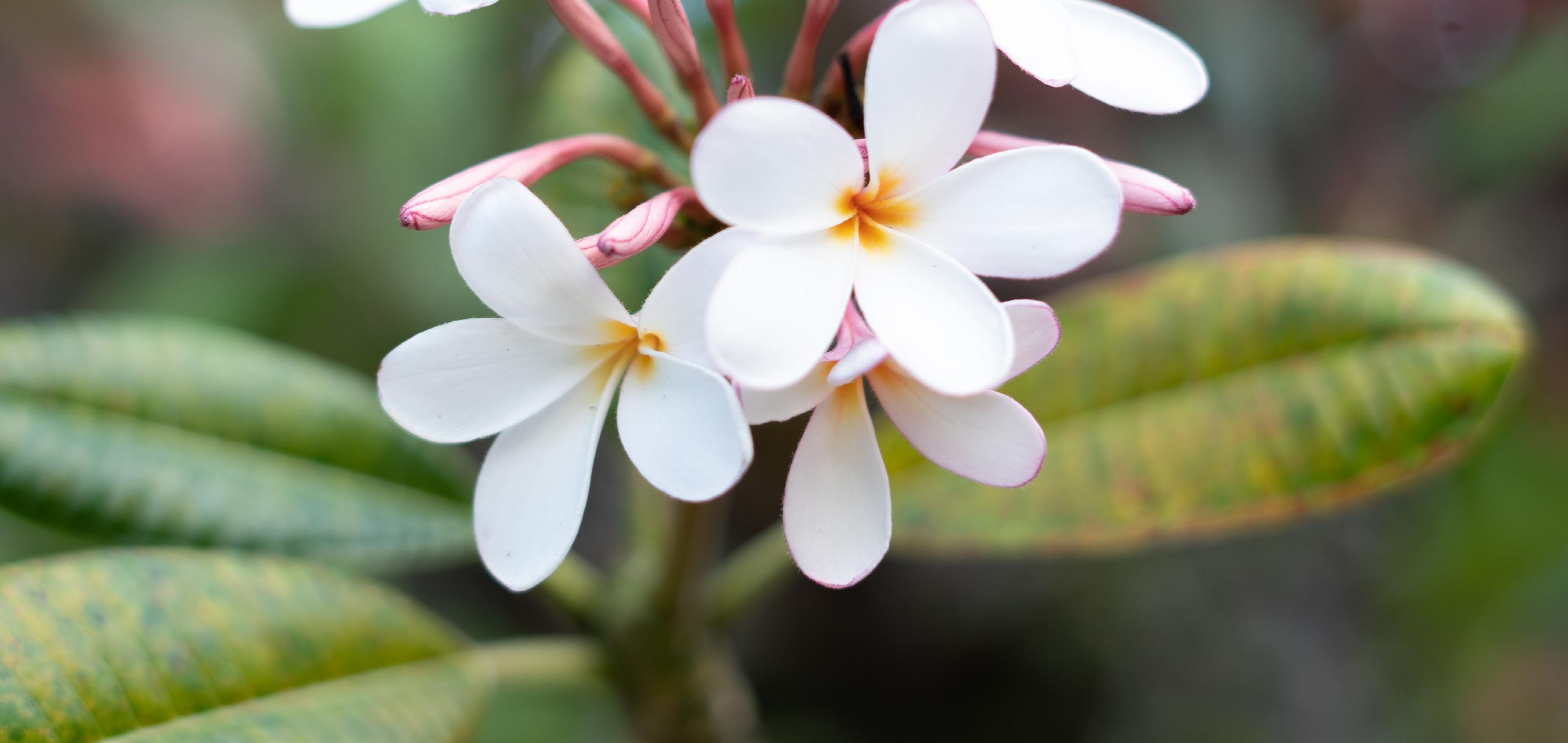


Students from various countries shared how their community demonstrate love. Even if all of them come from Asia, they said people’s love languages differ according to their neighborhoods and traditions.
Abhishek Masih, a sophomore from India majoring in exercise and sport science, said the love in their community is shown through sacrifice and charity. “Regardless of all circumstances [my parents] were going through, they never let us feel like we were going through hard times because they were willing to work hard for us,” he said.

He shared the demonstration of love is a principle learned in the gospel but applied at home. He said, “My parents gave up on their needs and wants to prioritize [ours] to make us successful in our lives.”
Masih said the biggest sacrifice he and his family had to make was after his two-year mission in the India Bengaluru Mission. He remembered being home for five months

when he decided to come to BYU–Hawaii, which meant he would spend another four years away from his parents. “It was hard for [my parents] because … they need someone to take care of them. But they decided to prioritize my needs and my future over their [wants],” he said. Masih said this made him feel loved.
As of his community, he said most parents are willing to sacrifice for their children and help each other. Masih recounted his mother helping other women delivering their babies and taking care of them [during their] postpregnancy. “My mom was there for them when they needed her help, and that’s how women usually help each other, by making each other feel safe and taken care of,” he added.
Hannah Boenari, a junior from the Philippines majoring in biology, said her community, Isabela, and her family show their love through sacrifices, acts of service and quality time. She also described their love as protective, saying, “[My parents] would always want us to be on their side, especially my dad.”

She said in the Philippines it is common for women to leave their families and work as Overseas Filipino Workers (OFWs) and come back later when their children graduate from high school or college. “All of my mom’s sisters, except for one … were abroad working hard and making sure to send their kids to a good school,” Boenari shared.
When her mother worked as an OFW, Boenari said her dad showed a more protective type of love toward her due to the separation.
Boenari said a lot of the houses in her neighborhood are close together and much of the neighborhood consists of her family on her mother’s side. She continued, “Because they only live a few blocks away, it’s our tradition back home that every Sunday, we’ll meet at our house and eat together.”
Some of the traditions in her community included, “men [serenading] up to women’s windows. Women had to be Maria Clara
[the traditional Filipino feminine ideal], look modest and act kind and composed,” Boenari said. She explained it depends on the region in the Philippines but because things are modern now, women can be bold with dating and only a few men still serenade.

Abiyasa Gathot, a sophomore from Indonesia majoring in hotel tourism and management, said, “Indonesia’s love is shown in four segments: cooking, acts of service, quality time and teaching.”
He shared his grandmother, who lives eight hours away by train from his home, expresses her love through her cooking and food.
He said she once visited him, which did not only surprised him but also touched him by her sacrifice and attention to the foods he likes. “She was carrying 20 kilograms of peanuts on a bus without [air conditioning] because she knew I loved them.” He said it was one of the moments he felt loved.
Luke 6:31, “Do unto others as you would have them do unto you,” is a principle Gathot said his family and community live by. He said acts of service and quality time are often the same thing. “Back home with my friends, we loved going to the coffee shop or playing games together. Even if you don’t have money, they will invite you just because they love you and they want to spend time with you,” he shared.
Gathot said showing love through teaching consists of words of affirmation, both encouraging talks and honest and forthright conversations. “When you get irritated because your parents talk too much, it actually means that they love you. If they stop talking to you, you really did something wrong,” he said. Gathot shared, “If someone is good at one thing … and they [people in his family or community] see you passing by, they will teach you [the] skills,” he shared.
Sunny Kwon, a junior from South Korea majoring in psychology, said words of affirmation and acts of service are the love language of her family and community. She said, “Depending on which area you’re from in South Korea, the affection is different. Since it’s more modern now, people are starting to change a little bit.”
Kwon shared it was only after her mother, her sister and her moved to Utah for educational reasons that her dad, who stayed in Korea, realized the importance of saying “I love you” and showing affection. She said this experience was a constant training for her dad to show love in new ways.
Kwon said she feels the people in the city of Busan don’t show a lot of outward affection.“[In Busan], they are very loud [and] a little bit rude to each other. But they have so much they are suppressing because they feel embarrassed to show that they like you,” she shared. Kwon said her parents grew up there and people often considered it weak for men to show emotions. She gave an example of how showing affection in Busan can look, saying, “[People] will bring you food or gifts and say they’ve picked it up from the trash the other day because they are embarrassed [by their emotions].”
With the influence of social media and more people visiting South Korea, Kwon said cities in the northern area, like Seoul, tend to demonstrate more affection and love.
Phanny Phon, a junior from Cambodia majoring in psychology, described the love in her community as welcoming and friendly. “My community is like a family. Everyone will help and serve each other,” she shared.
Phon recalled her parents showing love by cooking and also sharing it with their
 Portraits of BYUH students Abiyasa Gathot (left), Phanny Phon (top right), Sunny Kwon (bottom left) and Hannah Boenari (bottom right), who describe how their environment has shaped the way they see love.
Photos by Yui Leung .
Portraits of BYUH students Abiyasa Gathot (left), Phanny Phon (top right), Sunny Kwon (bottom left) and Hannah Boenari (bottom right), who describe how their environment has shaped the way they see love.
Photos by Yui Leung .
neighbors. “[My parents] love sharing food when we have a lot. They ask me to go around the neighborhood and share it,” she said.
In Cambodian culture, Phon said it’s not normal to overtly express love. “They believe if parents show love to their kids, the kids will become spoiled and won’t listen anymore,” Phon said. However, she said in her family, her parents always showed them love, patience and compassion. She explained, “If we did something wrong in front of guests or people, they would wait until they left and talk calmly about things we should do or not.”
Talking about her community, Phon said her hometown, Phnom Penh, Takeo, cultivated stronger relationships between neighbors because their houses were closer together. She said, “[When] something happens to someone, a funeral for example, they will spread the word to everyone, and the whole community will go to the family’s house to help with the preparation. We all know each other.”
Alaia Chen, a sophomore from China majoring in business management, described the love in her family as really private. “We



never say ‘I love you’ in my family. We usually just serve each other,” she shared.
Chen said she lived in her neighborhood in China for about six years but didn’t really get to know her neighbors. She explained, “We just say ‘Hi’ to each other but never really talk. We had some activities together and even a group chat, but we don’t actually know each other. Community thing is not big in China.”
Chen said the way parents show love to their children has evolved over the years in her region. “Traditionally, Chinese families usually care about their son more than their [daughter] because sons are the ones who can pass down your genealogy,” she explained. Since everything is more modern now, parents tend to express equal love and affection to every child, she said.
Chen recalled her sick days in boarding school and the care she received from her parents as they picked her up and brought her home. As she studies at BYUH and interacts with people from other countries, she said, “It makes me realize how much my parents have done for me, and it makes me feel really loved.” •
BYUH students share their favorite spots to get to know their dates
BY RANITEA TEIHOARIISome students, like Naia Pulotu, a junior from Hauula majoring in marine biology, said going on short hikes is a good first date “[because] if you don’t get the vibes from the beginning, at least you won’t have to spend five awkward hours with that person.”
A quick look at AllTrails will give you more details and descriptions of these hikes and their length:
Sunset Pillbox Trail (about an hour and 30 minutes)
Koko Crater Trail (about an hour and 24 minutes)
Makapuu Lighthouse (about two hours)
Manoa Falls Trail (about an hour and nine minutes)
Hauula Loop Trail (about an hour and 42 minutes)
If quality time is your love language, these are some combos to get to know each other and enjoy a beautiful skyline:
Sunrise
Watch the sunrise at Temple Beach and have breakfast at Hukilau Cafe
Go on a hike to see the sunrise from a different view
Sunset
Get ice cream at Angel’s Ice Cream and walk to Laie Point to catch the sunset
Grab a poke bowl at Foodland and watch the sunset as you eat
Walk around Haleiwa’s shops before going to Haleiwa Beach to see the sunset
Nety Manea, a senior from Tahiti majoring in elementary education, said, “Food is essential. If you are on a date without planning to eat, that’s a really bad idea.” Here are some ideas for where you can take your date out to eat:
Orchids Restaurant in Waikiki
Stonefish Grill in Haleiwa
The Alley in Ala Moana
Matsumoto Shave Ice in Haleiwa
Fasay Thai Wagon in Kahuku
Any of the food trucks in Kahuku
Sunday can be a time to stay spiritually minded while still meeting new people and going on relaxed, peaceful dates. Here are some ideas to get to know someone new on a Sunday: A walk or picnic at the Laie Hawaii Temple
Feed the horses along the Maleakahana Bike Path
Go for a walk on the beach
Teri Fifita, a sophomore from Tonga majoring in biology, said about first dates, “If you can find free yet fun activities, or not expensive ones, go for it! It’s just a first date.” Here are some ideas for cheap dates that’ll still be fun:
The HUB (free for BYUH students)
The Night Show (about $80 per person, but if you go with a PCC employee it will cost $10)
Visit Pearl Harbor and take the USS Arizona Memorial Narrated Tour (according to recreation.gov, tickets are free but there is a $1 reservation fee per ticket)
Take a car ride along Kamehameha Highway and sightsee Nuuanu Pali Lookout (parking fee of $7 per vehicle, according to dlnr.hawaii.gov)
The Byodo-In Temple (ticket entrance of $5 per person, according to byodo-in.com)
Waimanalo Country Farm ($5 per person for students with ID cards)
“Date someone who is a home and an adventure all at once,” MindJournal website says. Here are some date suggestions to bring out your adventurous side:
Crab hunting
A sunset cruise in Waikiki
Chambers Escape Games in Honolulu
Foster Botanical Garden in Honolulu
The Honolulu Night Market
Go on a double date
Go on a bike ride together
While speaking to BYU-Hawaii’s Mongolian students, the United States ambassador to Mongolia Richard Buangan advised the students to “Tell your stories.” Buangan said, “Right now, all Americans know of Mongolia is Genghis Khan, but there is a Mongolia of today and that story needs to be told.”
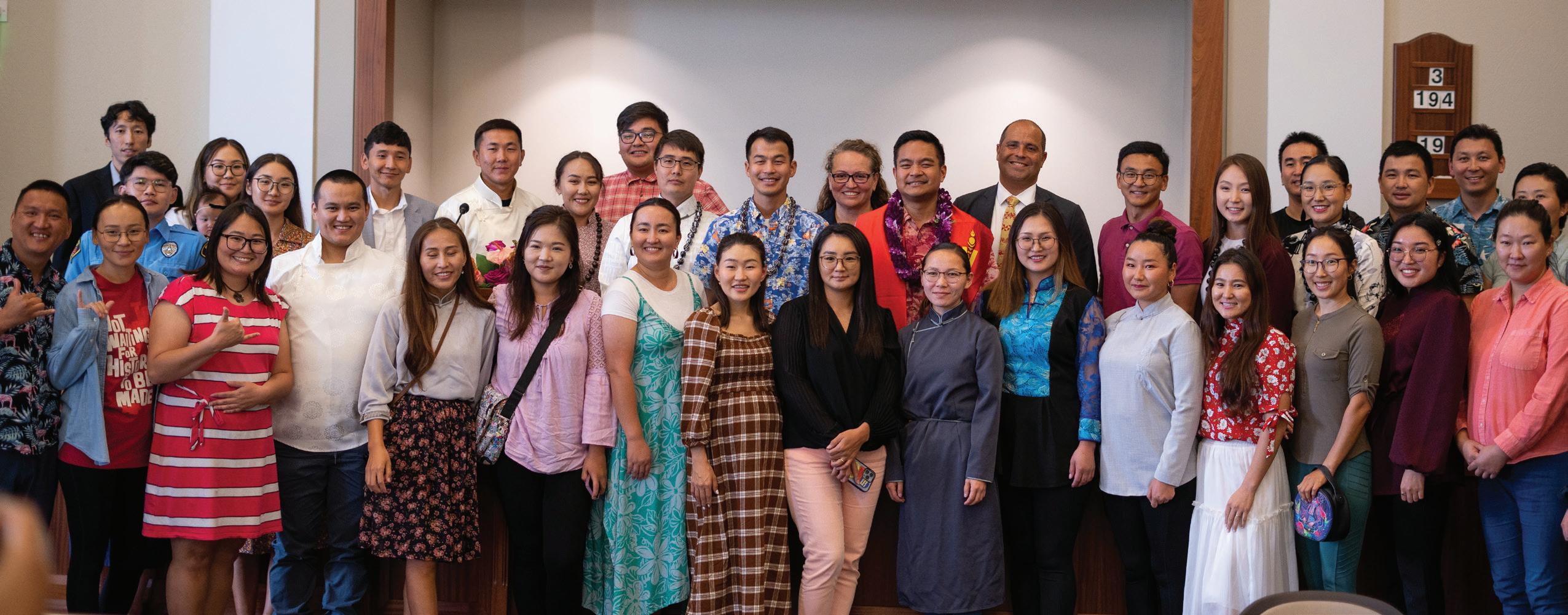
During the discussion hosted by the Mongolia Club on Jan. 20, Buangan said through his work in Mongolia, he has observed that the Mongolian people are incredibly self-aware of their place in history. As a democratic country sandwiched between two authoritarian powers, Russia and China, they are in a very unique position, he said.
Tsetsgee Enkhbold, an alumna who graduated in business management and psychology, said she has heard rumors of their Mongolian democracy struggling through the years. “It is very hard to be entirely independent from the two countries around us,” she said. “So, as an ambassador from one of the leading democracies in the world, what can we do to fortify our democracy?”
The rumors and expressions of criticism against the government that Enkhbold has seen are a strength in Buangan’s eyes, he said. “Democracy is not perfect. It’s not clean,” he said, “but it’s the best system of government to allow voices to influence the direction it goes.” In his
opinion, he said the more transparent democracies allow their systems to be, the stronger they are. “Embrace your democracy,” he advised. “Vote. Hold your elected officials accountable. Don’t be afraid to express your thoughts and ideas no matter how critical they are of the government.”
“People like me,” said Buangan, “Colin Powell, Condoleezza Rice, we were considered three-fifths of a person when the United States Constitution was written. That’s not something to be embarrassed by, that’s something to learn from.”
Three-fifths of a person refers to the Three-Fifths Clause in article one, section two of the Constitution of the United States, says the website Thirteen. Any person who was not free would be counted as three-fifths of a free individual, “for the purposes of determining congressional representation,” says the site. The clause “increased the political power of slaveholding states,” according to the website.
Buangan explained the many civil rights movements and additional constitutional amendments that got America to where it is today create an incredible story to tell, warts and all. He encouraged the Mongolian students to be proud of their identity, not because it is perfect or clean, but because it is strong.
While admiring the beauty in democracy, Buangan also recognized the need for other countries. He said he was in China for work in 2008. “It was a country I had long admired, but one that my country’s government is deeply suspicious of,” he said. While there, he said he realized he loved Chinese people and culture.
“I hope and pray that someday our two countries can learn to work together, because there are a lot of problems that cannot be solved without the U.S. and China working together,” he said. That is not a popular thing to say in his profession, acknowledged Buangan, but he said those who are able and willing to travel and interact with others can build bridges.
BYUH President John S. K. Kauwe III said one of the founding ideas of BYUH is to learn how to be an example to the world and build peace internationally. “That’s a grand experiment in a world that’s really struggling to have peace. We’re not perfect at it,” he said, and then added with a grin, “But we are really good.”


Mongolia’s economy is based on commodities, said Baska Purevochir, an alumnus who graduated in business management with a concentration in finance. He asked the ambassador how Mongolia could improve their tourism and bring more visitors from the United States.


“I think a reason why Mongolia is not very high on the list of places to visit is because there aren’t any direct flights,” said Buangan. With a more developed tourist industry focused on marketing what Mongolia has to offer, such as fly fishing and other outdoor experiences, Buangan said he thinks there will be more of a demand to visit Mongolia.
Another way to increase that demand, said Buangan, is for Mongolians to tell their stories. “When you interact with an American, whether that’s shopping or walking down the street or meeting someone on the bus, you are establishing a connection and you are telling a story. Exhibit the values that make Mongolia shine.”
Buangan is from California, graduated with a bachelor’s degree in political science and economics from St. Austin’s University in Texas and speaks French, Spanish and Mandarin Chinese. •
Take the quiz to find out!
Put a check in the colored box that most applies to you.
It is more meaningful to me when...
Someone I love holds my hand in public.
Someone I love carries my heavy backpack for me.
Someone I love sends me a text telling me they care about me.
Someone I love goes on a long drive or runs errands with me.
Someone I love gives me a present for each holiday.
Someone I love puts their phone down to be present in our conversation.
Someone I love gives me a surprise bouquet of flowers.
Someone I love gives me a hug after a long day.
Someone I love cooks me a meal after school.
Someone I love gives me a sincere compliment.
Someone I love helps me study my flashcards for a test.
Someone I love is around me, even if we are doing nothing.
Someone I love writes me a card telling me the things they love about me.
Someone I love leaves me a sincere note and my favorite candy on my doorstep.
Someone I love actively listens to me and validates what I am saying.
Someone I love is physically near me.
Someone I love gives me something I briefly mentioned I would like.
Someone I love runs an errand for me on a busy day.
Someone I love scratches my back in church.
Someone I love tells me they will support me no matter what.
Count and tally how many checks you had for each color. Check your results on the next page!
If this is your love language, it doesn’t mean you are greedy or materialistic. This type of gift giving and receiving is focused on the thought, effort and meaning behind the gift. You cherish personal gifts with careful consideration and meaning behind them. You can speak this love language by giving your significant other a surprise gift that made you think of them. Putting thought behind your gifts will make them feel extremely loved. Small everyday acts of giving can help your partner realize you think about them often and truly love them.
If you feel the most loved when your partner does kind things for you to lessen your stress or ease your burdens, then acts of service may be your love language. You feel loved when your partner participates in your interests, even if it’s not as enjoyable to them.
To share the love of service, find unique ways to serve your partner and avoid adding to your partner’s work or breaking your commitments to them. Something as simple as sweeping the floor or making meals for your partner will speak volumes about your love for them.
This love language is about more than physical intimacy; you crave thoughtful touches such as holding hands in public and hugging for comfort. Just being in the same room as your partner makes you feel more connected to them.
If this is your partner’s love language, it is important to show physical affection in situations of excitement, success, sadness, love and more. However, as with all aspects of a relationship, it is important to be sensitive to and respect your partner’s boundaries.
If your love language is quality time, then you may feel most loved when your partner gives you undivided attention. This means they completely focus on you - their phone is down, and all distractions are set aside. You enjoy participating in activities where you and your partner are engaged and focused on each other.
To show this type of love to your partner, it is important to actively listen to them, follow through on planned dates and focus on the quality of your time with your partner instead of the quantity.
Source: Discover Your Love Language - The 5 Love Languages®
Words of affirmation is likely your love language if genuine compliments hold more meaning to you than actions of love. You feel most loved when your partner says, “I love you” and explains why they admire you.
You can share words of affirmation with your significant other by praising their accomplishments and using kind words of encouragement. Negative or hurtful words leave a lasting impression; if this is your partner’s love language, make it a priority to reassure them with words of your affection and love.
Graphics by Marlee Palmer.

 BY LEXI LANGLEY
Graphics by Sugarmaa Bataa (Kendra).
BY LEXI LANGLEY
Graphics by Sugarmaa Bataa (Kendra).


















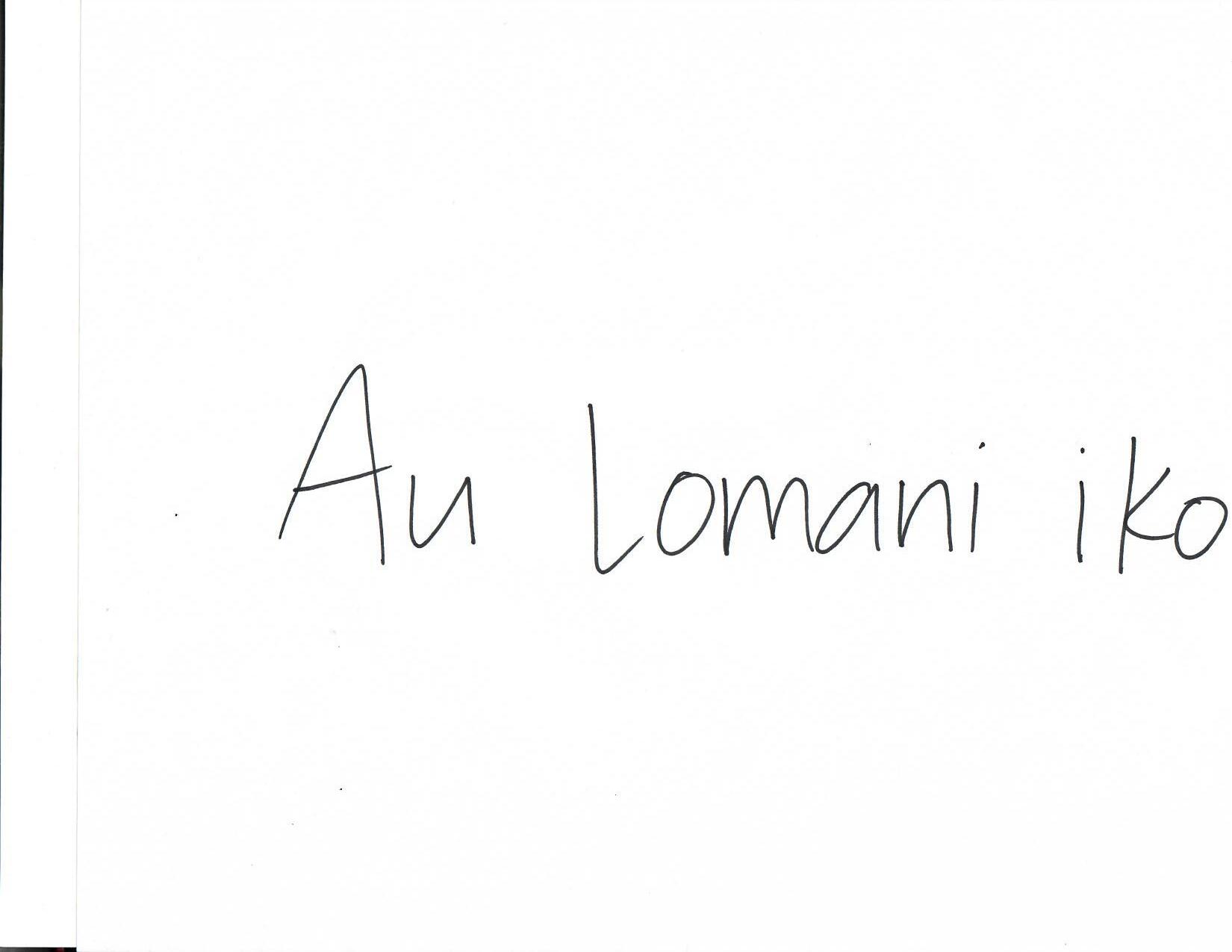





2 3 4 5 6

Invite someone to grab their favorite food and eat while watching the sunset. Write a letter to someone dear to you and offer them flowers and chocolate. Video call someone to share your love and appreciation for them.
“A great way to make someone feel special is to invite them to order their favorite food and watch the sunset while eating.”
“For Valentine’s Day, I will write a letter to my mom and get her flowers and chocolate because everyone should feel special, not only couples.”

“I will call my parents through video call [to tell] them how much I love and appreciate every sacrifice they make for me.”
Invite a friend or a family member on a date to the movies.
“Not everyone will spend Valentine’s Day with a lover, but we can always invite [our friends or family members] on a date to watch a movie and make them feel appreciated.”
Cook someone’s favorite meal for them.
“For Valentine’s Day, I will make my husband his favorite meal from back home, which is boiled chicken with coconut cream mixed with some vegetables.”
Invite someone on a walk to watch the sunrise with you.
“I want to take my wife on a walk to the sunrise. Since we are both students, our schedule is always busy. Enjoying the sunrise together will help us feel love in the air.”



 BY LINDA LAULU
BY LINDA LAULU
Asyears pass by with each valentine I sat and I wondered on so many things, Especially, if this year it would finally be my time, For my love life to actually begin. With each passing year of disappointment I often wondered if it was my fault, Or if I should just live this way with contentment, Or I should just put everything on halt. But then I looked back through life I noticed how far I came in my expeditions Of how much I have accomplished thru strife, And how I did not hold my adventures on pause or wait for
Graphics by Marlee Palmer and Sugarmaa Bataa (Kendra).Kanda Kannasut, a senior from Thailand majoring in psychology, said one of her favorite dishes is kra pao moo grob: stir fried crispy pork with Thai basil. Kannasut said she came to love kra pao moo grob because it reminds her of her sister and Thailand.

She explained she did not like the dish at first but, since her sister always ordered it, she tried it one day and grew to love it. “I feel like the ingredient is not complicated, but the taste is excellent,” said Kannasut.
“The love of food comes from my family. I can feel that the food she [my mom] gives to us is made with love,” she said. Kannasut shared when her mother opened a restaurant in Thailand, she showed love by giving people food. Whenever she came home from school when she was young, the food was always ready because her mom cooked for her.
In connection with memories of food to loved ones, Kannasut shared, “[Kra pao moo grob] is easy and simple and reminds me of the person I love the most. She is my best friend. She is my sister and she is also my great example, so I have a story about this menu,” she explained.
Matthew Templeton, a junior from Washington State majoring in social science education, said food brings him a good feeling, a good memory and an accomplishment. He said his favorite dish is beef stroganoff. For him it is not about the taste but about the feelings and memories that come with the dish. He said it reminds him of his mother. “It was probably the first food I helped my mom cook when I was with her.”
He shared that beef stroganoff was the first dish he gained confidence in cooking, but now he excels with a variety of foods. Now, he said, beef stroganoff reminds him of his accomplishment of cooking and the good time he had with his mom when he was young.

Abish Baliwas, a junior from the Philippines majoring in cultural anthropology and political science, said sinigang, a tamarind-based soup, reminds her of her home and makes her feel comforted. “My memory is being at the dinner table, sitting there enjoying the food and the conversation with my family and appreciating the presence of each member of my family.”
Baliwas said her parents would often cook sinigang for her and she has so many memories connected to the soup. Now that all her family members are occupied with their own lives, Baliwas said she cherishes the memories even more.

Baliwas said food is also a love language for her and part of her identity. “When I think of giving, I think of food. I’m going to cook for you is a love language [for me].”
She explained, “A lot of the things I grew up doing were always connected to food.”
She continued, “There’s always a reason why people gather over food. It brings people together.” •
Left: Thai dish called kra pao moo grob. Photo by Kris Krisanalome. Top right: A dish called beef stroganoff. Photo by Enkhtuvshin Chimee. Bottom right: Filipino dish called sinigang. Photo by Uckyo. Graphics by Yichi Lu.Through the atonement of Christ all god’s children can gain help and hope, said a BYU–Hawaii faculty member, an alumnus and a student. They shared stories of how the Atonement has helped them heal their hearts and find comfort in their trials.
Peter Meyers, an Institute teacher and adjunct faculty member in the Faculty of Religious Education, likened the Savior’s atonement to solar panels. The sun gives energy to the panels, but unless the energy is used to generate electricity, it is wasted. Individuals can receive the Savior’s atonement, but they need to use it for it to work miracles in their lives and receive comfort.
“The Savior can not only heal you once. He can heal you over and over and over again…I had to be open and honest to realize I needed His help,” said Meyers.
Ella Perrins said after quitting alcohol and drugs, her boyfriend Erik Lewis worked hard to return to church, serve a mission, and refind his faith in Christ. “I think one of the biggest things the Atonement did in working with him was changing his perspective. Not only of life and of others but also of himself. I feel like he saw his own potential and his capability to love and be loved and to serve,” said Perrins.
Noellette Song said after being in a toxic relationship and feeling objectified by somebody she really cared for, she found healing
in Christ and is now happily married to her husband, Alex, who cares for her deeply for her. “Back in 2019, I was heartbroken and in a really bad frame of mind. I feel like you have to go through the tough, the hard and the unbearable in order for you to experience the happiness at the end. It’s like the light at the end of the tunnel.”
Jesus Christ’s sacrifice in taking upon the sins of all who would ever live, known as the Atonement, is the foundation of Christianity, according to Elder Jeffrey R. Holland of the Quorum of the Twelve Apostles. Jesus suffered all the pain and temptations anyone would ever feel so He would know how to help and understand God’s children.
Meyers stressed the infinite nature of Jesus Christ’s atonement, likening it to his own life. He said he was born the fourth of seven children in a family he described as dysfunctional and abusive, with both his parents and other family members suffering from mental
health issues.
“My parents were just trying to make it from day to day. So, they didn’t have a lot of energy or effort to be able to help us. We were raised in
a really non-traditional environment where we really didn’t have parents to lean on or teach us. It was a fend-for-yourself kind of situation,” he said.
Meyers said although he excelled in sports and in school, he did his best to get out of the home environment he was growing up in. His family lived on welfare constantly, and he said he would only go home when he had to be there.
At age 14, Meyers said he quit all hope things would get better. “It was just too much. My home was this place of tremendous dark-
Meyers said the challenges continued as he got older, and he would wonder why God did not intervene to stop the various types of abuse that were occurring to him and his siblings.
Meyers said he came to a point where he just couldn’t believe in God anymore, because it was more painful for him to believe in a God who “allowed” for the abuse to happen. “I couldn’t make sense of it. I just [couldn’t] make sense of the questions and what I’ve dealt with and what other people aren’t dealing with.”
Because of his hopelessness, Meyers said he stopped going to church, though his parents continued to attend. At the age of 19, he said he felt he had his life figured out, living day to day as he had seen his parents live. “There was no purpose. There was no power with the way that they lived. I got into a huge argument with my father, who I just hated at the time, and still struggle with now,” said Meyers. His father insisted that Meyers was going to serve a mission for the Church, which Meyers thought was impossible, since he had not been to church for five years and did not believe the Church was true. His father posed a question to him. “How can you walk away from this church when you’ve never read the book it was founded on?”
From this chapter, Meyers said he started to read the scriptures for hours on end, and learned to repent through help from his bishop. As he continually applied the atonement in his everyday life, Meyers said he realized just how many other people suffered in the world, and wanted to share the Savior’s message of love. He ended up serving in the South Dakota Rapid City Mission, where he said he was able to bless the lives of others, as well as receive caring guidance from his mission president.
Although challenges with his parents and siblings continued after his mission, and memory of the trauma he experienced continues to this day, Meyers said he knows all will be made right. As he puts forth effort, he said God opens door after door for him.
Now, Meyers said he is happily married with five children of his own, and loving his job of teaching about the scriptures. Speaking of the Savior and the divine blessings in his life, he said, “His grace and His mercy are not just sufficient; they are bounteous.”
Perrins, a senior student from Guam majoring in hospitality and tourism management, said she had seen the Atonement heal the heart of her boyfriend, who is currently serving his mission in Buenos Aires, Argentina.
Her boyfriend, Erik Lewis, has been serving for three months in Argentina as of Feb. 2023. However, Perrins said the path for him to get to Argentina was a long one, full of trials and eventually turning to the Savior for help.
ness and sadness all the time.
I was trying so hard to make it out of that, and I just got to a point…I got tired of doing it by myself. And it caused a lot of anger in me.”
With a challenge from his father, Meyers said he began reading The Book of Mormon with the intention of not believing it was true, but one night, he reached 2 Nephi 4 that contains Lehi’s blessings to his sons. In the passage, Nephi describes himself as a “wretched man,” and details his desire to be with God but laments his many sins and weaknesses.
As Meyers read it, he said the words became alive to him, and understood Nephi was a real person and possessed something he did not have: a relationship with Jesus Christ. “One of the titles of the Savior is the hope of Israel, and I realized there was hope for my life,” said Meyers.
Lewis, who is from Arizona, had begun his mission back in 2017, but according to Perrins, he decided it was not for him several days into his time at the Missionary Training Center (MTC). After coming home to Arizona, Perrins said Lewis went through a period of distancing himself from anything related to the Church. He began consuming alcohol and abusing drugs, she explained.
Perrins said Lewis began to turn his life around at the age of 23. “There was one night in particular where he had this really personal awakening, and he realized that he wasn’t content with his life. He wasn’t happy where he was going or where he was at the moment. The only thing that he could think of on this
particular night was Christ.” He also thought about what he learned of Christ “in Primary, and how Primary songs made him feel.”
After his family members had distanced themselves from him and his friends had stopped talking to him, Perrins explained despite his loneliness, he knew in his mind that Christ cared. “I’d say that’s what opened up the steps of applying the Atonement to his life.”
For the next couple of months after he began to apply the Atonement, Perrins said
Lewis worked bit by bit on returning to church. With the help of one of his leaders, Lewis decided he wanted to turn himself around completely and go back out on his mission.
“He dropped alcohol [immediately] and began his journey to sobriety and to becoming a worthy priesthood holder,” said Perrins.
Perrins said she met Lewis back in November 2021, after he moved to Laie to progress on his plans to serve a mission. They began dating, and Perrins said it was incredible for her to see the change in him while he was preparing to return to his mission, unbeknownst to his family.
Despite having to wait month after month to be eligible to serve a mission, Perrins said Lewis never lost sight of his goal.
She explained, “Through all those months of trial and error, he stood by his choice, and he wanted to return on a mission to bring this hope of light to a dark world. And he saw the darkness that comes from turning away from Christ, but also how the Savior’s light is always there waiting.”
While in Laie, Perrins said Lewis would attend the temple, as well as spending time
on the grounds, which, according to her, strengthened his testimony.
Perrins said she saw the work of Jesus Christ’s Atonement in Lewis and was reminded how central the Atonement is to every person’s life. She said oftentimes, many people might know the Atonement is always there to help, but assume it is only for the “good” people. In her boyfriend, Perrins said she saw the inner change wrought by Christ shown on the outside, as he learned to love his neighbor as himself.
Perrins concluded,“I definitely feel the Atonement helped him [Erik Lewis] piece together his life. In hindsight, it’s amazing how he went from the darkest point in his life, to, with Christ’s help, healing himself mentally, emotionally, and physically.”
Noellette Cookson Song, an alumnus from New Zealand who graduated with a degree in psychology, said she experienced a romantic heartbreak during her time in BYUH, something which affected her for nearly two years.
When she was a freshman, Song said she and a young man who had served in her same mission came to BYUH the same semester. They started talking and began going on dates together, but according to her, “Things were not as I thought they would be.” She said there was a mutual attraction between them both, but things would happen that made her feel the universe did not want them together.
“I would pray to Heavenly Father, and tell him, ‘Heavenly Father, I go to the temple, I’m an ordinance worker. I served a mission. I go to church. I’m a full tithe payer. I read my scriptures everyday. I do all the necessary things I feel like a member should do to receive blessings.’ But I wasn’t getting the blessing that I wanted, which was to be with this guy,” explained Song.
Although she had feelings for the boy, Song was told he was already in a relationship with someone else and wanted to respect that. Even when he was dating someone else, Song said he would tell her he liked her, which
made her feel he was being dishonest and made her an object of pity for him.
After several more experiences of him telling her he liked her when he was dating another girl, Song said she felt incredibly hurt, and told him they should forget about each other. She said it was not right or fair to his girlfriend for him to be continually professing feelings for someone else over and over again, and repeatedly getting her own hopes up. During the rest of 2019, Song said she could remember sobbing before and after work, her heart broken.
“I’d never seen a nervous breakdown before, but I actually experienced it because of this incident I had with him. I was really heartbroken to the point I wouldn’t go on dates with anybody,” shared Song. She said she would instead go to the gym to get over her heartbreak, but even exercise and other distractions were not able to fill the void she felt inside of her.
Song revealed she was in a state of heartbreak until the COVID-19 pandemic began. “To be honest, I was actually happy,” she said of the quarantine and moving back home when the pandemic began. Living back in New Zealand meant Song would not have to see the young man she was trying to get over.
Song explained,“Being away from him and in a whole different country made me so happy because I wasn’t able to see him at all.”
When she came back in 2021, Song said she was a very different person. It was during this time she met her future husband, Alex.
Looking back, Song said she felt God did not bless her with a relationship with the boy she used to like because He had something better for her. “Me marrying Alex made me happy. And to be honest, I wouldn’t trade it. He treats me like a queen every single day… Spiritually the Lord knows what is best for us, even if we don’t know the outcomes.”
To learn more about the atonement, visit www.churchofjesuschrist.org and search “Atonement of Jesus Christ” in the Gospel Topics. For further literature, read Elder Jeffrey R. Holland’s April 2013 General Conference Talk, “Like a Broken Vessel,” or Elder Tad R. Callister’s 2019 General Conference Talk, “The Atonement of Jesus Christ.”
If you or someone you know is experiencing mental health challenges at BYUH, you can reach out to Counseling Services at (808) 675-3518. Services are free and confidential. For more information, visit https://counseling.byuh.edu/. •
Use the tabs below to learn the song “Unconditionally” by JKing on the Ukulele




























ARRANGED BY LINDA LAULU



























